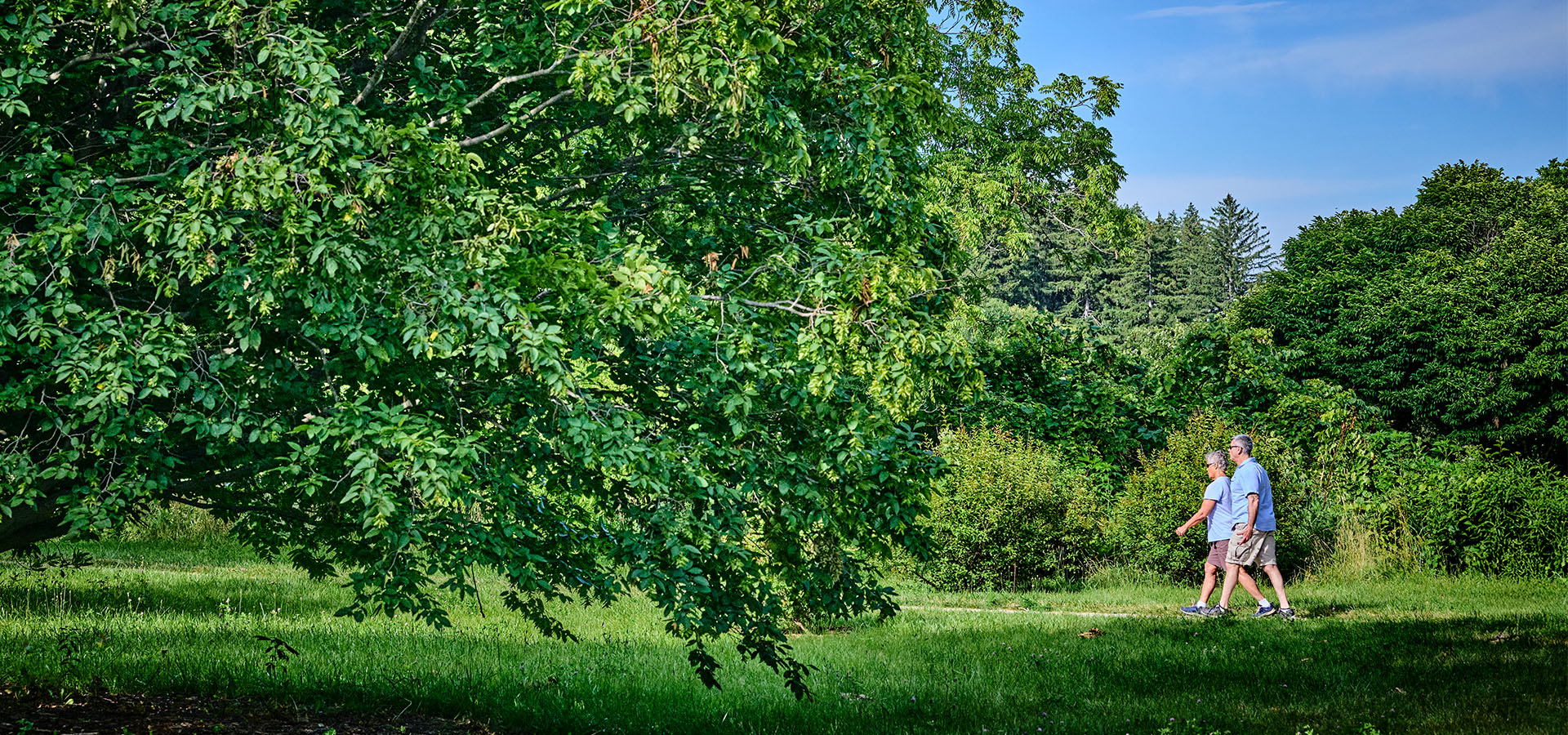Trees are crucial to addressing a warming planet, global species loss, and damaging weather events. They are a necessary resource for sequestering carbon, and provide an invaluable safety net for our communities—cooling homes and cities, mitigating flooding, improving public health, and supporting entire ecosystems.
With your philanthropic support over the past year, The Morton Arboretum has continued to strengthen its work in science, conservation, preservation, and engagement with trees. Your generosity has had a far-reaching impact on people in the Chicago region, across the country, and around the globe.
Thank you for supporting the essential work of the Arboretum to conserve and plant trees. Your contributions help advance our vision for a greener, healthier, more beautiful world where people and trees thrive together.
Your Impact at the Arboretum
Slider
Slider controls
The Morton Arboretum is an internationally recognized tree-focused botanical garden and research center. Its 1,700 acres of beautiful tree-filled landscapes are a place of enjoyment, a vibrant hub for nature education, and a world-renowned center for scientific research that studies trees and how to sustain them.
This past year, donors have been instrumental in helping to maintain the grounds to welcome more than 1.1 million visitors, creating meaningful connections with nature, with a continued emphasis on reaching new and diverse audiences. The next generation of tree champions was inspired through donor-supported educational programming like Summer Science Camps, which were recently recognized by Newsweek as one of the nation’s top summer camps.
Your Impact Across Chicagoland
Slider
Slider controls
The Arboretum’s community forestry program, the Chicago Region Trees Initiative (CRTI), continues to be recognized nationally as a model for urban forestry. Last year, the Arboretum awarded nearly $15 million in federal funding to 61 community groups, nonprofits, and local governments for urban and community forestry work in priority areas across the state.
In 2024 donors helped support CRTI’s work, including partnering with 35 communities to plant 790 trees, and distribute another 800 saplings, 500 larger trees, and tools, along with sharing expertise to help improve the Chicago region’s urban tree canopy. CRTI also works with area nurseries to encourage them to grow a more diverse range of trees that are more likely to be able to withstand invasive pests and stresses facing urban trees because of a changing climate.
Tree plantings go beyond helping to improve the urban tree canopy. “They set an example and inspire people to plant and care for trees,” said Zach Wirtz, CRTI director. “By training and inspiring people to become tree champions in their own communities, they exponentially amplify the Arboretum’s impact.”
Your Impact Around the Globe
Slider
Slider controls
Donor impact reaches far beyond Chicagoland to help preserve endangered oak species in Mesoamerica, the region stretching from the U.S.–Mexico border south through Panama. In an effort to preserve the future of these rare oaks, Arboretum researchers and international collaborators recently published the Conservation Gap Analysis of Native Mesoamerican Oaks.
“It addresses gaps in current knowledge and in conservation efforts,” said Kate Good, the lead author of the study and research manager in the Arboretum’s Global Tree Conservation Program. “There are so many threatened species, but we have limited time and money. How do we best focus our efforts? One important way is to establish priorities based on scientific information.”
The project’s report lists, describes, and assesses the prospects for 59 rare and threatened species of oaks in Mesoamerica. Although 91 oak species are native to the United States, 164 species are known to be native to Mexico, with more in Belize, Guatemala, Honduras, Nicaragua, Costa Rica, El Salvador, and Panama.
Oaks are a special focus of The Morton Arboretum’s science and conservation programs because of their immense ecological importance. The 430 known species of oaks worldwide, ranging from small shrubs to majestic tall trees, are a source of food and shelter to many kinds of animals. Many oak species are considered keystone organisms on which entire ecosystems depend. An earlier Arboretum study found an estimated 31% of the world’s oak species are threatened with extinction.
To face these threats, the Arboretum operates both the Global Conservation Consortium for Oak and the Center for Species Survival: Trees.
One of the needs identified in the report is more propagation of rare oak species, both for replanting in the wild and for botanical collections. The Arboretum’s Global Tree Conservation Program has helped conservationists in Mesoamerica plant acorns and grow oak seedlings, and is reintroducing them into their native habitat.
“This analysis is a crucial step toward facilitating partnerships and spurring conservation action to help protect threatened Mesoamerican oaks before time runs out,” said report co-author Silvia Alvarez-Clare, PhD, director of the Arboretum’s Global Tree Conservation Program. “Gaps are opportunities.”
